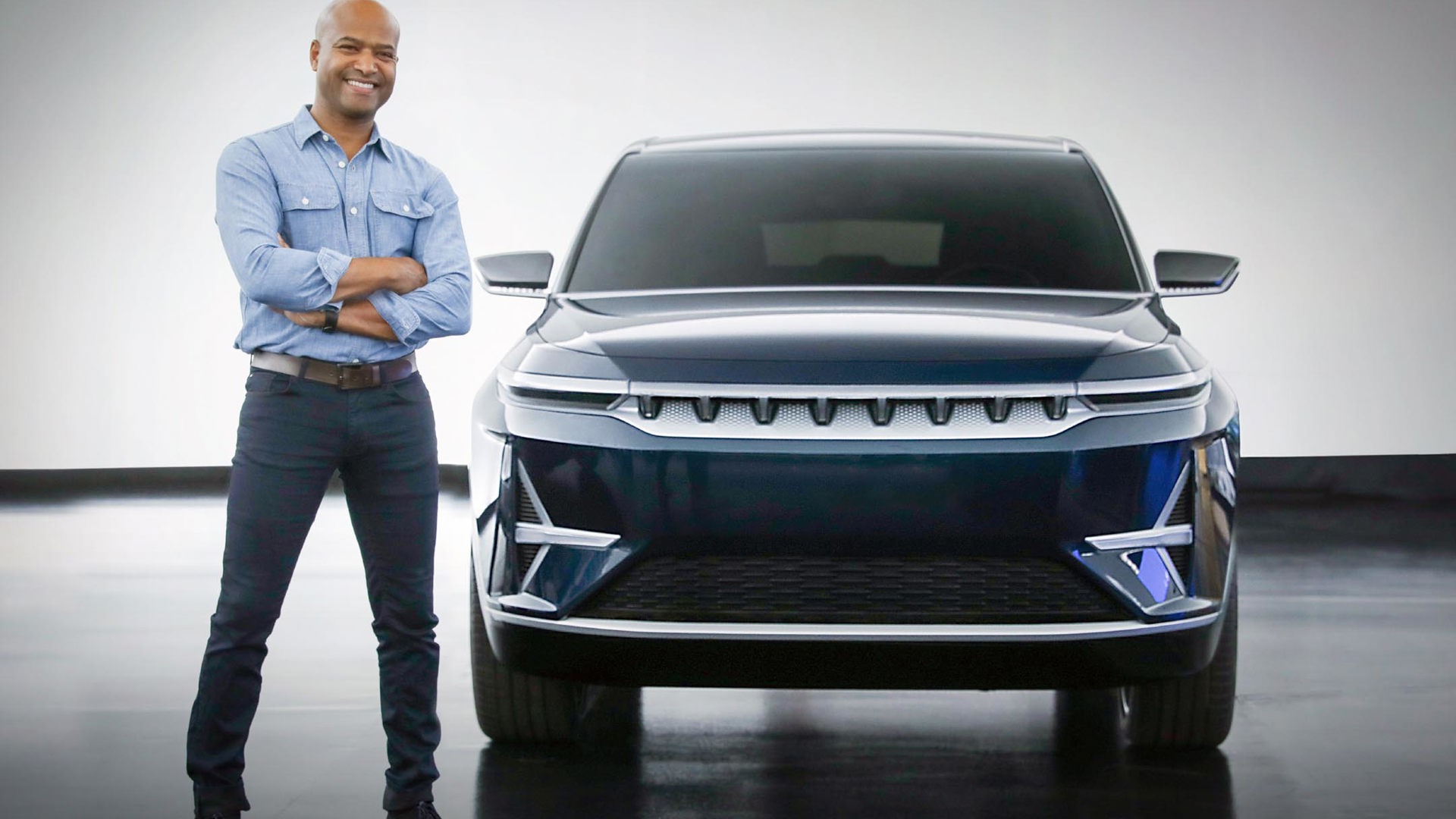Anyone looking to make it as an automotive designer won’t find a better role model than Ralph Gilles.
The North American styling head for the Stellantis group of brands knows a thing or two about what it takes to make it in a space that’s constantly evolving, with a storied career that’s seen his handiwork go mainstream. From the Chrysler 300 to the final version of the Dodge Viper, Gilles has been involved in some iconic designs over the years. So when he starts dishing details about what it takes to do this for a living, it’s probably wise to pay attention. And according to the Montreal-raised designer, a little guidance can go a long way.
“Think about mentorship,” Gilles said during a sit-down at the New York International Auto Show, where two of the latest designs his team was responsible for were unveiled: the production version of the upcoming all-electric Ram 1500 pickup, as well as the updated Jeep Wrangler.
He said a mentor doesn’t necessarily need to be someone who works in the auto industry, let alone a designer. What it comes down to is learning what it takes to be successful, especially if it involves something that you’re passionate about. Just as importantly, make sure that the passion is real before pursuing such a challenging and competitive career.
“Are you really passionate, or are you just in awe,” he asked rhetorically. “There’s a difference between whether you want to do it for a living or just like to think you want to, so decide that.”

If you’ve still got the fire in your belly and an eye for design, the next step is to do your homework. According to Gilles, it’s wise to “reverse-engineer” the career path to better understand the steps involved in reaching your goals. He said the internet has made that process easier than ever, with a quick Google search of just about any vehicle on the road today turning up results outlining who designed it, which can lead you down the rabbit hole of their educational and professional paths.
“I wish I would’ve grown up during the internet age,” he said with a laugh. “It would’ve been a whole lot easier.”
For those unfamiliar with Gilles’s story, it started in earnest when his aunt recognized his talent and passion for automotive design as a teenager. So she sent a letter on his behalf to revered auto exec Lee Iacocca, who was chairman of Chrysler Corp. at the time. Shortly thereafter a response arrived from the automaker’s then-director of advance and interior design, Neil Walling, who noted the “significant promise” Gilles’s sketches showed and encouraged him to enroll in a design-specific school.
After a little teenage indecision – and a whole lot of encouragement from his brother – Gilles applied and was accepted to one of the schools Walling recommended in his letter: the College for Creative Studies (CCS) in Detroit. Because even a styling savant like Gilles wouldn’t be where he is today without formal training. That’s why the next generation of auto designers should absolutely do the same – not necessarily at CCS, but any school that’s going to teach them the basics and beyond.
“It’s extremely important,” Gilles said of getting a post-secondary education in design. “Some of it’s not necessarily the learning as much as it is the networking. You learn sometimes more from your classmates than the teachers themselves (because) being in that environment of other like-minded people, other talented people raises your game.”
In addition to formal training, he said immersing yourself in your surroundings and asking questions is another important part of a designer’s growth, but a big barrier is an electronic one. Heck, you might even be reading these very words with one in your hand.

“You’ve got to get out of your phone, to be honest with you,” Gilles said, and suggested observing the world around you is a great way to get inspired and influenced – especially when travelling. “If you have any opportunity at all to travel, even your own country, get out there. Because you will notice a very big difference from one city to another – lifestyles, choices people make, mobility solutions.”
He has witnessed firsthand what broadened horizons can do, not just for individuals but for companies, with his own history at what’s now known as Stellantis going through a few different mergers over the years that have seen designers from around the world collaborate and learn from one another.
“Stellantis, just by merging – and even when (Chrysler) merged with Fiat – brought an incredible amount of opportunity to mix cultures (and) knowledge,” said Gilles.
That’s also why he wouldn’t let geographical boundaries limit your own aspirations – “the passion is transferable,” as he put it.
No matter where you’re from, finding success as an auto designer is achievable. But as Gilles has seen over his years in the industry, talent alone isn’t enough to take you to the top. In design, as in life, it takes hard work and determination to get to where you want to be – and it takes passion and education.
“There’s no doubt – if you apply yourself, success is waiting for you,” he said, with one added caveat: “There’s no shortcut.”

